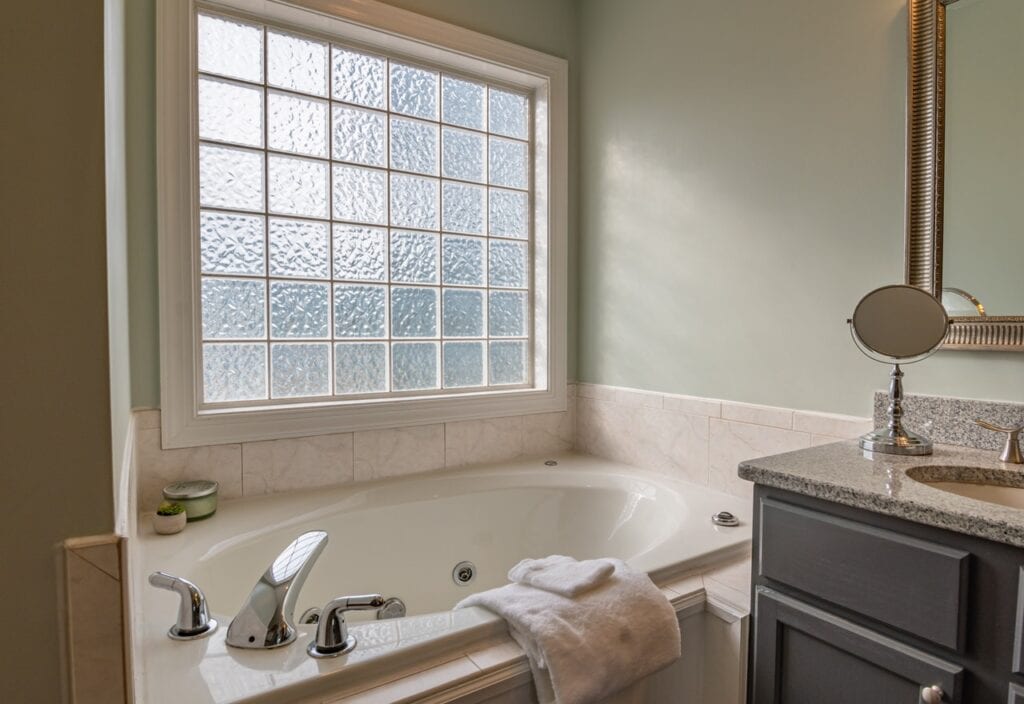Though aesthetically pleasing and durable, plaster ceilings can often develop cracks over time, these cracks can result from various factors, such as building settlement, structural issues, moisture, or temperature fluctuations.
Cracks in your ceiling not only diminish its visual appeal but may also raise concerns about the building’s structural integrity. This article will help you understand the causes of plaster ceiling cracks, how to repair them, and why it might be best to hire a professional to address these issues.
Let’s get straight to the point.
Plaster ceilings often develop cracks due to settlement, structural issues, moisture, temperature fluctuations, or poor quality. These cracks can impact both the aesthetics and structural integrity of your home.
Common types include large discoloured cracks (indicating water damage), horizontal cracks (due to shifting trusses), and thin straight cracks (caused by improper joint taping). Minor cracks can be repaired using DIY methods, but larger or recurring cracks often require professional help.
Professional repairs offer benefits such as high-quality results, time efficiency, safety, and warranties. They ensure your ceiling is properly restored while potentially increasing property value.
Steps To Repair Ceiling Cracks
1. Gather Your Materials And Set Up The Area
Materials Needed:
- Drywall compound or plaster patching material
- Fine-grit sandpaper (120-150 grit) for smoothing
- Coarse sandpaper (60-80 grit) for tougher spots (optional)
- Putty knife (4-6 inches wide)
- Mesh tape or plaster tape (for larger cracks)
- Paint to match the ceiling
- Primer (if needed) to ensure even paint coverage
Preparation:
- Lay down a drop cloth or plastic sheeting to protect furniture and floors from dust and debris.
- Wear protective goggles and a mask to prevent inhaling dust.
2. Clean And Prepare The Crack Area
Clean the Surface:
- Use a soft brush or a vacuum with a brush attachment to remove dust, debris, and loose plaster from the crack. This step ensures that the patching material bonds well.
Undercut the Crack (if needed):
- For plaster ceilings, use a utility knife to slightly undercut the edges of the crack, forming a “V” shape. This gives the patching material a larger surface area to grip, improving the strength of the repair.
3. Apply Mesh Tape For Larger Cracks
Position the Tape:
- Apply mesh tape over the crack for cracks wider than 1/8 inch or with depth. This reinforces the crack and prevents it from widening over time.
Secure the Tape:
- Smooth the tape to ensure it’s fully adhered to the surface, with no bubbles or loose edges.
4. Apply The Patching Material
Initial Layer:
- Scoop a small patching compound onto the putty knife and apply it over the crack. Press firmly to fill in the crack completely, especially using mesh tape.
Smooth and Feather the Edges:
- Use the putty knife to smooth the compound, feathering out the edges so it blends with the ceiling. This technique prevents visible edges once the patch is painted over.
Additional Layers (if necessary):
- For deep cracks, apply two or more layers. Allow each layer to dry fully (as directed by the compound manufacturer) before applying the next layer.
5. Sand The Patched Area
Initial Sanding:
- Once the compound is completely dry, use coarse sandpaper (60-80 grit) on thicker spots, if necessary, and switch to finer grit (120-150) for the final finish.
Final Smoothing:
- Sand gently until the patched area feels smooth and flush with the rest of the ceiling. Avoid over-sanding, which can expose the tape or cause it to crack again.
6. Prime And Repaint The Area
Priming (Optional but Recommended):
- If you’re repainting a large area or the patch is extensive, apply a primer to prevent the patched area from absorbing too much paint, which could cause a noticeable colour difference.
Repainting:
- Use paint that matches the ceiling’s colour and finish. Apply with a small roller or a paintbrush, blending the patch with the surrounding ceiling. If there’s a significant colour variation, paint the entire ceiling for the best results.
These steps create a smooth, durable patch that blends seamlessly with the surrounding ceiling.

Causes Of Ceiling Cracks
Understanding why ceiling cracks appear helps ensure proper repair and prevention. Here are the main causes:
- Settlement – Ground shifts or compacts, often from groundwater changes or soil settling, causing cracks.
- Structural Issues – Poor construction or misaligned beams create stress points that lead to cracking.
- Water and Moisture Damage – Leaks, humidity, or condensation weaken ceilings, causing cracks.
- Temperature Changes – Heat expansion and cold contraction can stress ceiling materials.
- Poor Installation – Low-quality materials or improper installation result in weak spots that crack over time.
- Movement and Vibrations – Building vibrations from machinery or heavy foot traffic can weaken the plaster.
- Natural Disasters – Earthquakes and storms put structural stress on ceilings, leading to cracks.
Warning Signs Your Plaster Ceiling Needs Repair
Before repairing cracks in your plaster ceiling, check how serious they are. Some cracks are only cosmetic, but others can signal structural issues. Here’s what to look for:
- Loud cracking sounds – These may indicate shifting structural elements.
- Discolouration around cracks – Water stains suggest moisture issues.
- Sagging plasterboard – This shows the ceiling isn’t properly attached anymore.
- Small surface blisters – Early signs of water damage.
- Plasterboard pulling away or falling – Immediate action is needed.
If you notice any of these signs, consult a professional to avoid further damage or a possible ceiling collapse.
Common Types Of Ceiling Cracks And Ways To Fix Them
Ceiling cracks can vary in appearance and severity. Below are the most common types of cracks, their potential causes, and how to repair them.
1. Discoloured And Large Cracks
Large cracks with discolouration usually indicate moisture damage. Water may have seeped through the ceiling, causing the plaster to weaken and crack. The first step in fixing this issue is to locate and fix the source of the water leak. Once the area has dried, you can begin the repair process by removing the damaged plaster and reapplying tape to the joints.
2. Horizontal Cracks Between The Wall And Ceiling
Horizontal cracks often appear where the ceiling meets the wall due to roof trusses shifting due to temperature changes. The best solution is to have professionals install clips or blocks to reattach the ceiling drywall to the trusses.
3. Thin, Straight Cracks
These cracks are often caused by improper joint taping during the ceiling’s construction. To fix this, apply drywall compound underneath the loose tape and press it back into place. Once the compound dries, you can repaint the area to blend the repair with the surrounding surface.
4. Fine, Web-like Cracks
The shrinking of the ceiling compound typically causes fine cracks that spread in all directions as it dries. These cracks are usually cosmetic and can be fixed by applying a fresh layer of drywall compound and paint over the affected area.

Conclusion
Various factors, including settlement, structural issues, moisture, temperature changes, and poor artistry, can cause cracks in plaster ceilings. Identifying the cause of the cracks is essential to selecting the best repair method. While minor cracks can be fixed with DIY patching, larger or more serious cracks often require professional attention.
Hiring a professional plasterer ensures that repairs are completed to a high standard and that any underlying structural issues are addressed. In addition to improving the aesthetics of your home, professional ceiling crack repairs can enhance structural stability, insulation, and property value. When dealing with ceiling cracks, a well-executed repair can make all the difference in preserving the beauty and safety of your home.
FAQs About Plaster Ceilings
What Causes Cracks In Plaster Ceilings?
Cracks in plaster ceilings can result from various factors, including building settlement, structural issues, moisture, temperature changes, and poor installation or artistry. Movement and vibrations, as well as natural disasters, can also lead to cracks over time. Understanding the root cause is essential to selecting the most effective repair method.
How Can I Tell If A Ceiling Crack Requires Professional Repair?
While many cracks are cosmetic, certain signs indicate the need for professional attention. If you see large or discoloured cracks, hear loud cracking noises, notice sagging plasterboard, or find blisters or water stains around the crack, it’s best to consult a professional. These issues can signify moisture problems, structural shifts, or detachment, which require expert evaluation and repair.
What Are The Steps For A DIY Ceiling Crack Repair?
DIY repairs for minor cracks generally involve gathering materials (like drywall compound, sandpaper, and mesh tape), cleaning the crack area, applying mesh tape for larger cracks, patching with drywall compound, sanding to a smooth finish, and repainting to match the ceiling. Proper preparation and technique are key to a seamless repair that blends with the rest of the ceiling.
Can Plastering Over Ceiling Cracks Improve My Ceiling’s Durability?
Yes, plastering over ceiling cracks can enhance the structural stability of your ceiling by reinforcing weak areas. In addition to improving aesthetics, plastering can improve insulation and reduce noise transfer, resulting in a more energy-efficient and quieter home environment.
Should I Use Drywall Compound Or Plaster For Ceiling Crack Repairs?
For minor cracks, drywall compound is often sufficient and easy for DIY repairs. A plaster patching material may provide a more durable solution for larger or deeper cracks in plaster ceilings, especially when applied with mesh tape for added reinforcement. In cases where the ceiling requires extensive repair, it may be best to contact a professional for guidance on the best materials and methods.

